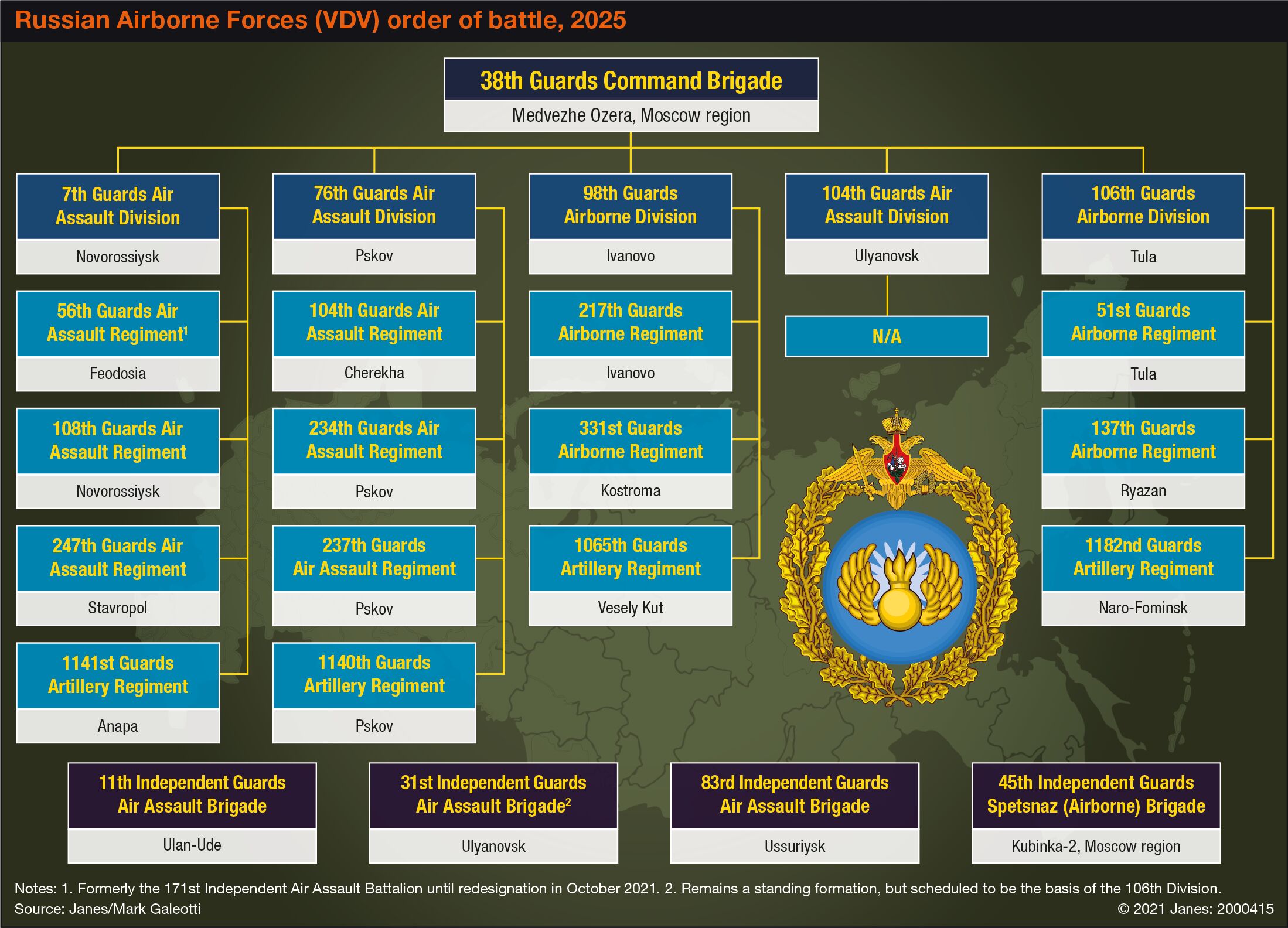
Russian Airborne Forces (VDV) order of battle, 2025 (Janes/Mark Galeotti)
The ‘winged infantry' of Russia's Air Assault Troops (Vozdushno Desantniye Voyska: VDV) is an arm of service in its own right, with a strength of 45,000 paratroopers and rising, as well as a distinctive culture and esprit de corps . With its blue berets and blue striped telnyashka vests, the VDV is a fixture of parades and military open days, but it has long suffered from a tension in its roles.
Historically, parachute divisions were envisaged as strategic forces at the disposal of the General Staff, while air assault units were operational forces supporting Military District commands. However, in practice they were repeatedly – from Afghanistan to Chechnya – pressed into service as light infantry because they had the toughness and willingness to act with the initiative that a mission demanded.
Moreover, Russia's Military Transport Aviation (Voyennaya transportnaya aviatsiya: VTA) lacks the capacity to deliver more than – at best – two regiments of paratroopers. The VDV, and its specialised air-droppable light armour, often ended up more closely resembling an overspecialised arm of the Ground Forces. Local press reported that, in 2009–10, former Minister of Defence Anatoly Serdyukov and his Chief of General Staff Nikolai Makarov were set to abolish the VDV as a separate combat arm and to transfer all its existing assets to the army.
The VDV was saved because it has allies in the high command and the political leadership, while Serdyukov and Makarov had other more pressing priorities. Nonetheless, this episode highlighted the challenge in identifying a role for the VDV that would justify its separate command structure and distinctive range of equipment.
Looking to read the full article?
Gain unlimited access to Janes news and more...



